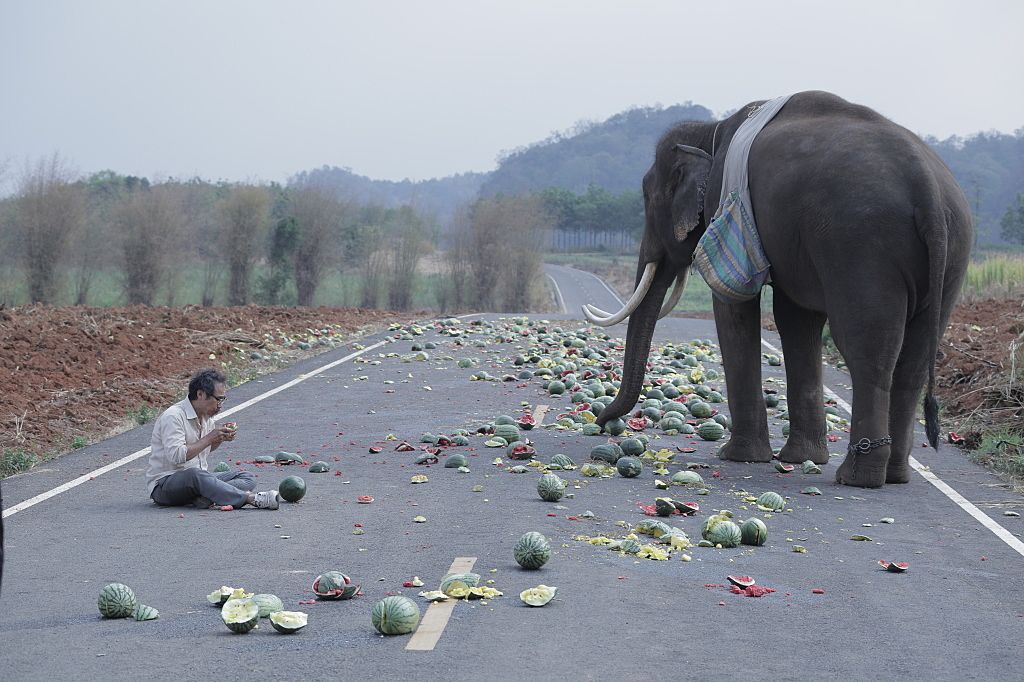Not all Mid-life Crises: A Review of Pop Aye
While some (male) mid-life crises come calling in the form of a clichéd sports car and a significantly younger romantic partner, in Kirsten Tan’s Pop Aye, jaded architect Thana reconnects with his youth via the ministrations of an aging elephant and a rural karaoke queen.
While some (male) mid-life crises come calling in the form of a clichéd sports car and a significantly younger romantic partner, Kirsten Tan’s Pop Aye sees jaded architect Thana reconnect with his youth through an aging elephant and a rural karaoke queen.
Infused with a wry sense of humour, Kirsten Tan’s debut feature Pop Aye is a beautifully observed study in self-discovery. Thana, a celebrated Bangkok-based architect, is finding himself increasingly relegated to the status of ‘historical reference’, a point underscored by the recent condemnation of his first major architectural work (an award-winning, multi-level shopping complex). Affairs are also looking stale on the homefront, with Thana’s wife Bo finding his amorous attentions more annoying than alluring. What's a once-so-potent man to do? Recapture his youth, of course - except Thana defies the stereotype of the aging Don Juan. Wandering the city one night, he chances upon the elephantine companion of his youth, ‘Popeye’ (rescued as calf and adopted by his village), and thus begins a three-quarter-life-crisis journey of rediscovery across rural Thailand.
Pop Aye evinces great warmth for its leads and the characters they encounter in their travels. Thana acts as the means, then recipient, of grace as he fumbles his way back to his home village in the company of vagrants, policemen, and sex workers with moments of genuine connection and friendship. The film foregrounds humanity’s better nature, something all too often missing from our daily interactions in this super ‘connected’ world. Despite the film’s non-judgmental tone—no character is either unduly demonised or let off the hook for their behaviour—it deftly exposes the pride and privilege that undergird Thana’s ability to choose to undertake such a journey, as well as the way in which he takes it. Leaving town on a sudden, unplanned road trip and purchasing whatever you need as required is the province of the well-to-do. Tan specifically contrasts her lead’s privileged situation with that of a mystic vagrant, a working girl, and others he meets along the way, without ever slipping into heavy-handed moralising. Yet the film makes clear that each person Thana spends time with has as much to offer him as he does to them, and that, ultimately, our similarities outweigh our surface differences. And if in the beginning Thana’s contribution is primarily financial, then as the film moves along, he finds he has other more personal means at his disposal.
Writer-director Tan, a native of Singapore, comes to Thai cinema by way of a one-year artist-in-residency at the Asian Young Filmmakers Forum in Jeonju, South Korea, then later the NYU Masters in Film Production programme. Her unique sensibility shows through in her sly wit and a strong, though fluid, visual style as she explores the theme of our shared, fundamental humanity. While by no means a work I would characterise as ‘slow cinema’, there is a patience to Tan’s visuals and editing that suits the nature of Thana and Popeye’s ponderous journey. (It could be just me, but I felt like I noticed a slight rolling motion to some of the camerawork, echoing the movement of the film’s scene-stealing pachyderm.)
Pop Aye stands apart from the limited Thai cinema I have viewed to date... Tan’s vision of Thailand is refreshingly everyday.
Pop Aye stands apart from the limited Thai cinema I have viewed to date, which could loosely be described as either a) leaning into the rich historical traditions of the country (such as musical biopic The Overture and Tony Jaa action franchise Ong Bak) or b) having a penchant for garish hues (think Tears of the Black Tiger) or c) the films of Apichatpong Weerasethakul with their contrasts of visually striking indoor and outdoor locations. Instead, Tan’s vision of Thailand is refreshingly everyday. There is a distinct difference in the way Tan and cinematographer Chananun Chotrungroj choose to frame interactions between people and the way they frame Thana and Popeye. People are mostly shot close-up, with distances between characters signifying shifts in intimacy: in a front-mounted car interior shot of Thana and Bo—returning from a television interview where he reminisced about his now-condemned building as a place to enjoy time with his wife—each are positioned at the extreme edges of the frame, driving in uncomfortable silence. Conversely, Thana and Popeye are often shot from afar, giving a sense of Thana’s diminutive size and their relative insignificance against the landscape through which they’re travelling.
A buoyant cinematic experience, Pop Aye combines captivatingly original storytelling, an appealing visual style, and thoughtful thematic filmmaking - signalling Kirsten Tan as a filmmaker to keep your eye on.
Pop Aye


